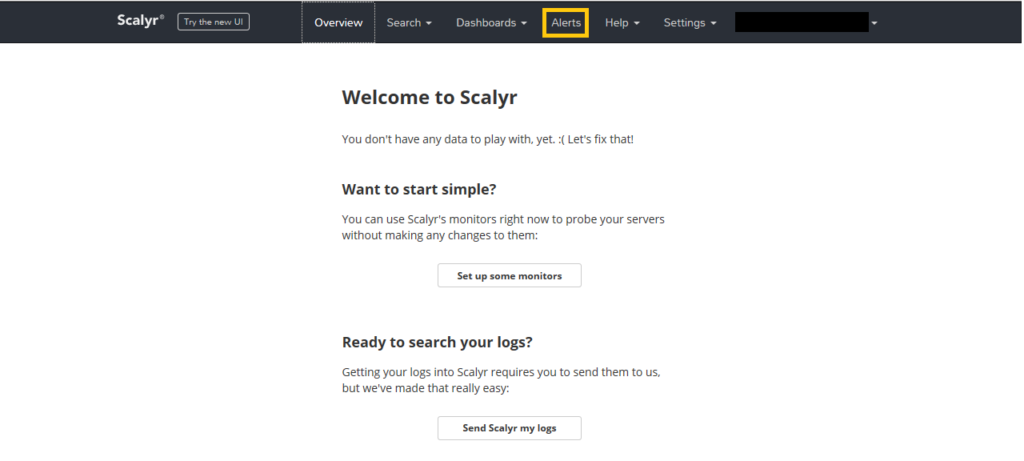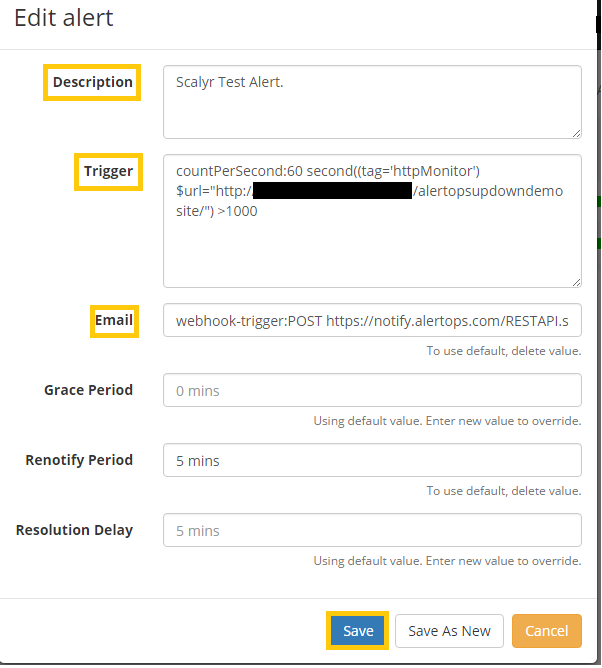- 06 May 2024
- 1 Minute to read
- Print
- DarkLight
- PDF
Scalyr
- Updated on 06 May 2024
- 1 Minute to read
- Print
- DarkLight
- PDF
Scalyr Integration Guide
Scalyr unifies multiple functions into a single tool: log aggregation, search & analysis, server metrics, dashboards & alerts, external monitoring, and more. Integrate AlertOps’ alert management platform with Scalyr to receive and respond to critical alerts through email, SMS, push notification, and phone alerts. AlertOps ensures that alerts received from Scalyr always reach the correct, available team member by utilizing escalation policies and on-call schedules.
AlertOps Configuration
- From the main menu, click on Integrations and then select Inbound Integrations from the sub menu.
- Select API tab
- Select the 'ADD API INTEGRATION' button.
- You should now be on the API Integration Detail page. Select Scalyr from the pre-built Integration Templates.
- Enter a name for the integration. Select an escalation rule to determine the integration's escalation policy.
- Enter the names of recipient group(s) and recipient user(s).
- Click 'SAVE.' then, click 'COPY URL' to copy the URL endpoint to be used in the Scalyr configuration.
Scalyr Configuration
Step 1: Using the webhook-trigger function in Scalyr, Go to Alerts.
Step 2: Edit an alert
Step 3: Complete the required fields.
NOTE
Scalyr requires both a webhook-trigger and webhook-resolve in the email entry box. An example is shown below.
webhook-trigger: POST https://notifytest.alertops.com/RESTAPI.svc/POSTAlertV2/generic/xxxxxxxxx/Scalyr/Scalyr/subject/id/status/none/link/subject/subject/none[[{“id”: “#id#”, “status”: “triggered”, “subject”:”Scalyr Alert #title#” ,”link”:”#link#”}]]&content-type=application/json,
webhook-resolve: POST https://notifytest.alertops.com/RESTAPI.svc/POSTAlertV2/generic/xxxxxxxxx/Scalyr/Scalyr/subject/id/status/none/link/subject/subject/none[[{“id”: “#id#”, “status”: “resolved”, “subject”:”Scalyr Alert #title#” ,”link”:”#link#”}]]&content-type=application/json
Alert Triggering Information
AlertOps will automatically create an incident when a new alert is received from Scalyr with an IncidentStatus status of “triggered.”
If an alert with status “triggered” matches an existing Open Alert, AlertOps will recognize the new alert as a duplicate and ignore the alert. The alert will be recorded in the Inbound Messages table as “Mapped Appended.”
AlertOps will automatically close the same incident when an alert with an IncidentStatus status “resolved” is received.
Testing and Troubleshooting
Click here to read about Web API Testing and Troubleshooting.






